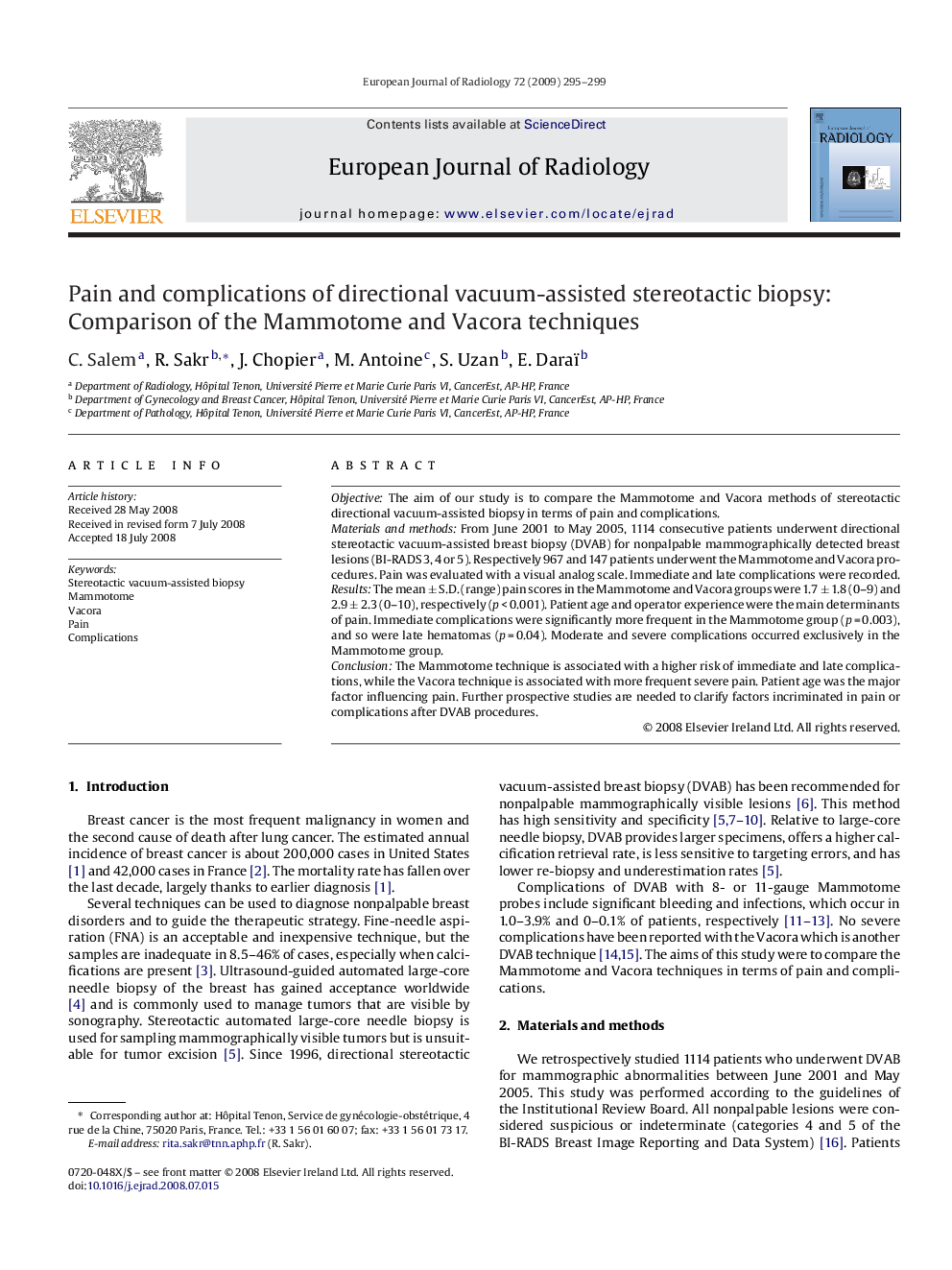| Article ID | Journal | Published Year | Pages | File Type |
|---|---|---|---|---|
| 4227270 | European Journal of Radiology | 2009 | 5 Pages |
ObjectiveThe aim of our study is to compare the Mammotome and Vacora methods of stereotactic directional vacuum-assisted biopsy in terms of pain and complications.Materials and methodsFrom June 2001 to May 2005, 1114 consecutive patients underwent directional stereotactic vacuum-assisted breast biopsy (DVAB) for nonpalpable mammographically detected breast lesions (BI-RADS 3, 4 or 5). Respectively 967 and 147 patients underwent the Mammotome and Vacora procedures. Pain was evaluated with a visual analog scale. Immediate and late complications were recorded.ResultsThe mean ± S.D. (range) pain scores in the Mammotome and Vacora groups were 1.7 ± 1.8 (0–9) and 2.9 ± 2.3 (0–10), respectively (p < 0.001). Patient age and operator experience were the main determinants of pain. Immediate complications were significantly more frequent in the Mammotome group (p = 0.003), and so were late hematomas (p = 0.04). Moderate and severe complications occurred exclusively in the Mammotome group.ConclusionThe Mammotome technique is associated with a higher risk of immediate and late complications, while the Vacora technique is associated with more frequent severe pain. Patient age was the major factor influencing pain. Further prospective studies are needed to clarify factors incriminated in pain or complications after DVAB procedures.
